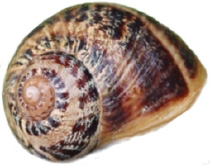...Best of Sicily presents... Best of Sicily Magazine. ... Dedicated to Sicilian art, culture, history, people, places and all things Sicilian. |
by Roberta Gangi | ||
Magazine Index Best of Sicily Arts & Culture Fashion Food & Wine History & Society About Us Travel Faqs Contact Map of Sicily |
It should be mentioned that the most popular snail in Sicilian cuisine is a small variety of Helix aspersa, the European brown snail, found in the greener areas of the European Mediterranean and North Africa. This is what is usually referred to as babbaluci. A larger, but rarer, species identified scientifically only in 1832 is its slightly larger, distant cousin, Cornu mazzullii, which thrives in north-western Sicily between Trapani and Cefalù. Unlike tiny Aspersa, the Cornu is endangered and therefore not harvested - officially at least. Outside kitchens, Cornu is what is usually meant by the generic term "Sicily snail." The much larger French escargot is Helix pomatia. It is possible that ground snails became a popular food during Sicily's Arab period, but they were certainly consumed here long before the ninth century. Ground snail farming, called heliciculture, is a much more recent development. Oddly enough, babbaluci are not usually served with pasta. More often, they are boiled in salt water, following a day soaking in cold water or perhaps a container of flour. They are served with a condiment made of finely-diced celery stalk, parsley, garlic and lightly sautéed in olive oil seasoned with salt and pepper. But the Sicilian snails are not removed from their tiny shells as easily as the French escargots. Instead, toothpicks are used. Recipes for babbaluci abound and, yes, there are a few recipes for babbaluci with pasta. This is one of those cases when only a local ingredient will suffice. It's not easy to find Sicilian-type snails outside the central Mediterranean, though smaller French ones may suffice in a pinch. Serve them with a Sicilian white wine. About the Author: Roberta Gangi has written numerous articles and one book dealing with Italian cultural and culinary history, and a number of food and wine articles for Best of Sicily Magazine. | |
Top of Page |
 In Sicily snails make their most
prominent culinary appearance during the Summer for the Feast of
In Sicily snails make their most
prominent culinary appearance during the Summer for the Feast of